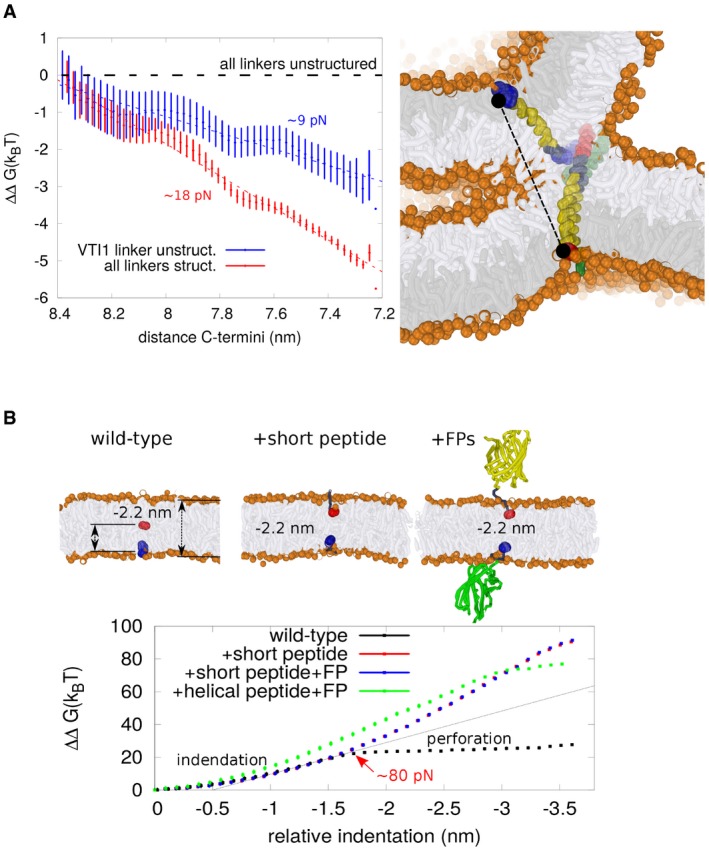Figure 2. SNARE forces.

- Estimation of the intrinsic force that the vacuolar SNARE complex can exert on a stalk‐like fusion intermediate (shown in the right panel; coloring as in Fig 1) via its TMD C‐termini (Nyv1 and Vam3). At this stage, the distance between the C‐termini (the two connected black dots) is about 8 nm. The force that the C‐termini exert on the membrane, about 9 pN, is estimated from the difference in work required to induce a small indentation in the presence of structured versus unstructured Nyv1 and Vam3 linker regions (the slope of this profile defines the force). The additional presence of a structured Vti1 linker doubles the exerted force from 9 to 18 pN.
- The inherent elastic response of a flat lipid membrane (POPC) was studied by enforcing indentations via the isolated SNARE C‐termini in the presence or absence of a short linker peptide, or of the linker plus a fluorescent protein tag (FP). We define “relative indentation” as the change in C‐terminus (Nyv1)—C‐terminus (Vam3) distance (NYV1: blue colored beads, VAM3: red colored beads) that results when the SNARE complex performs mechanical work. It reflects the depth of the formed well upon squeezing. The slope of the obtained work profile estimates the required force (thin black line). Perforation (red arrow) requires a force of 80 pN for the wild‐type C‐termini. The plateau within the work profile indicates that the membrane gives up its elastic response (perforation transition). C‐terminal tags oppose such a perforation transition but do not significantly affect the forces observed within the indentation regime. Furthermore, if the unstructured peptide spacer would be α‐helical—and thus much shorter—indentation forces would still only be slightly affected.
